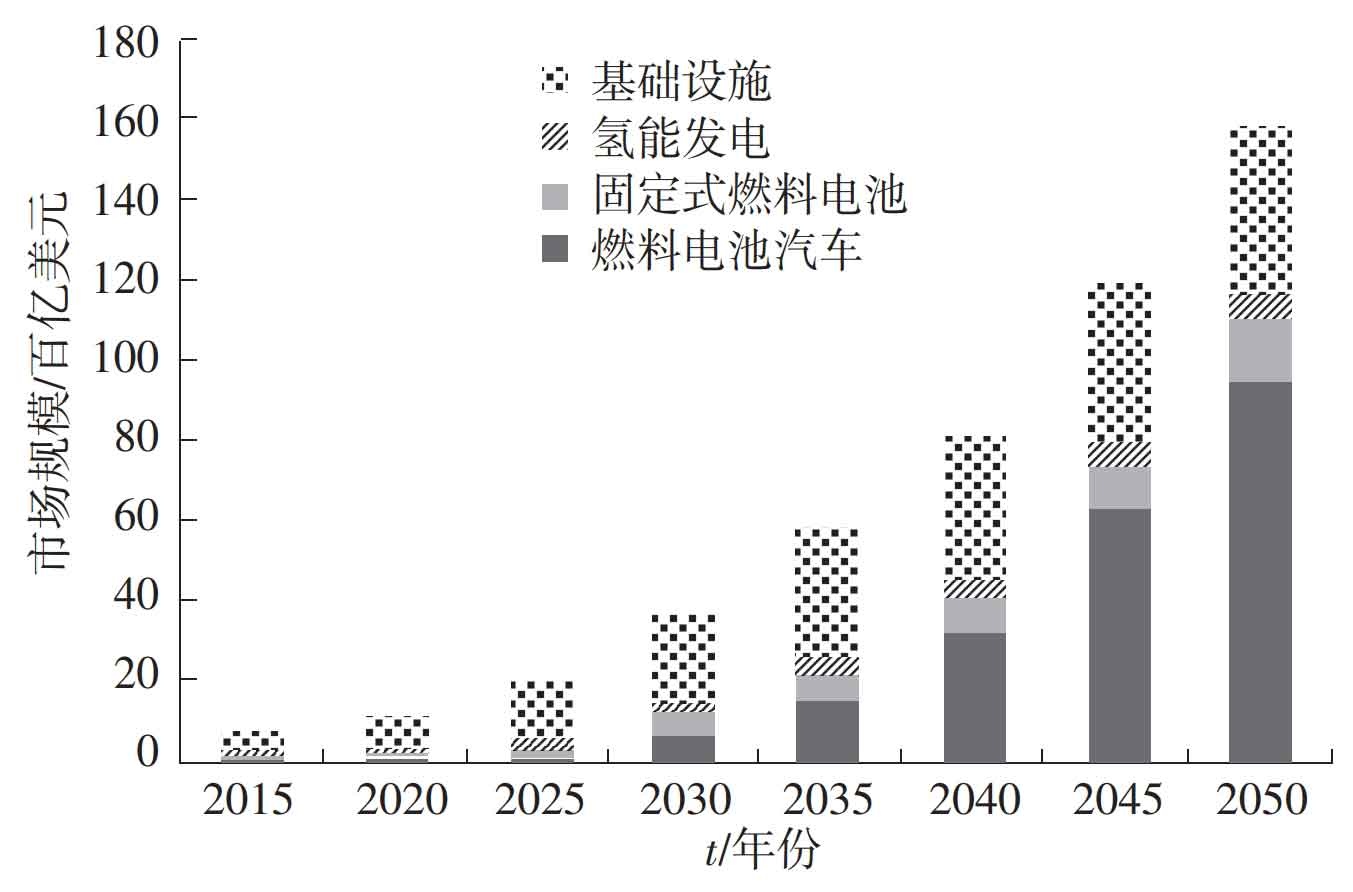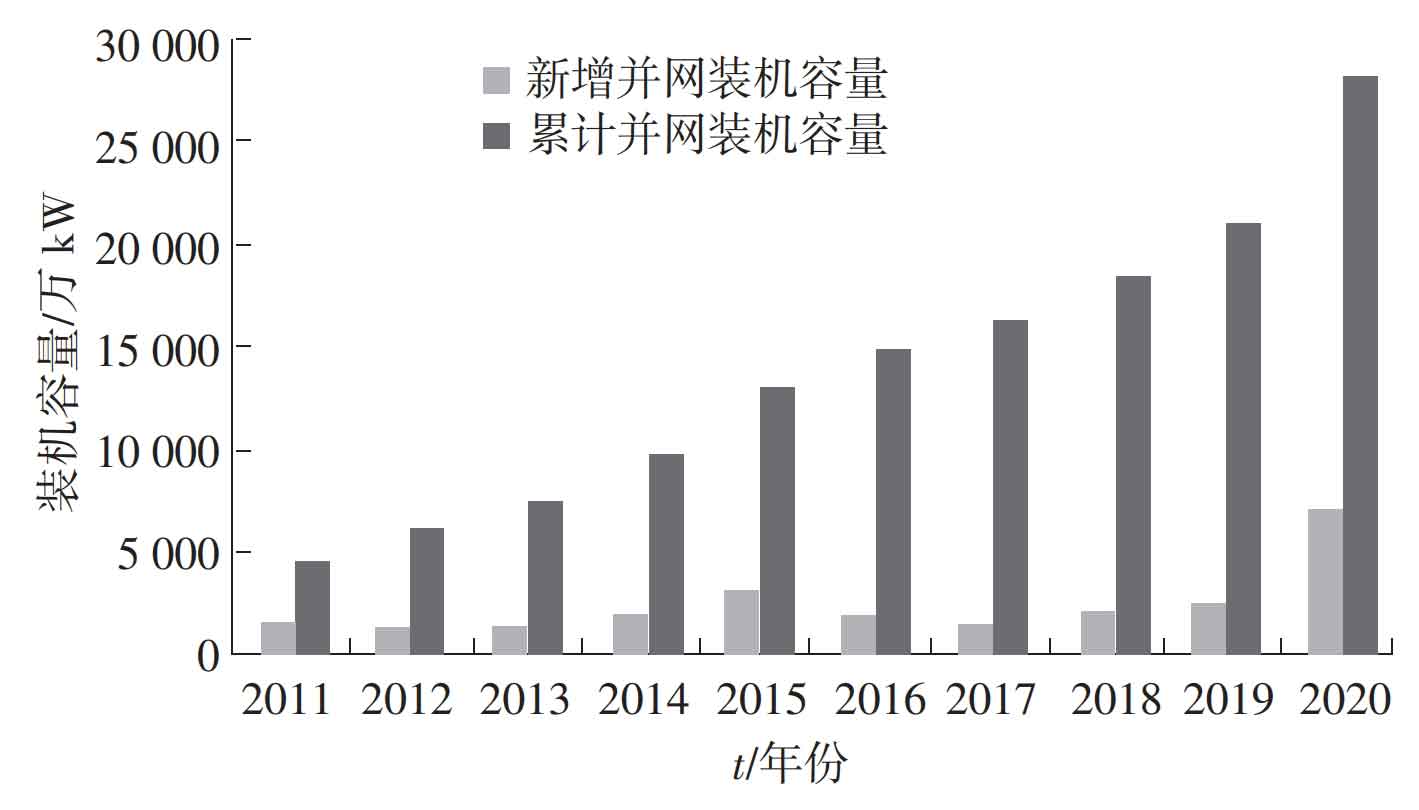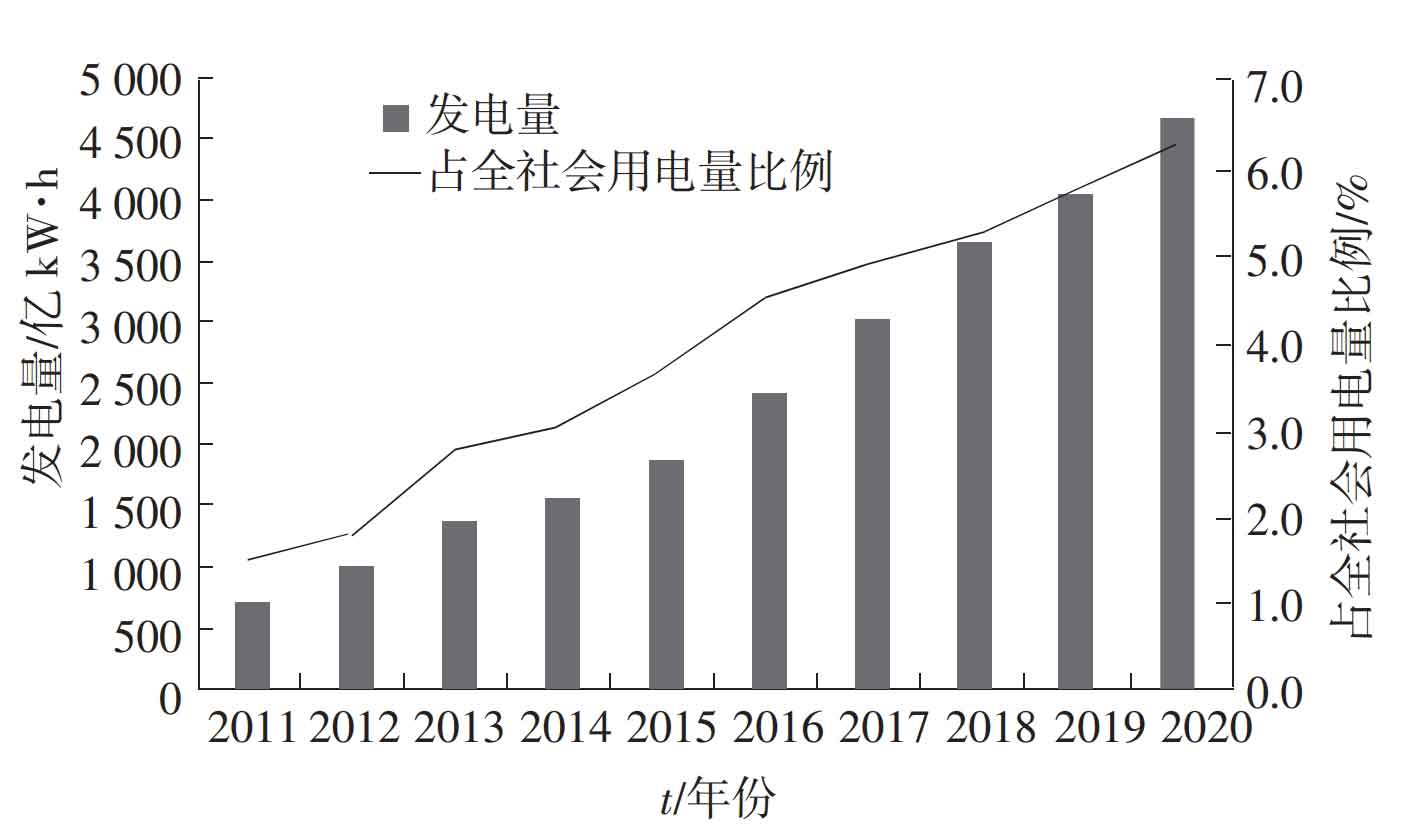The greenhouse effect causes climate change and damages the ecological environment, with greenhouse gas emissions being the main culprit. CO2 is the main component of greenhouse gases, and controlling carbon emissions has become an international environmental issue. Low carbon and green development has become the trend of the times, and is the only way to promote high-quality and sustainable economic and social development. Countries around the world have also taken many measures to transition from fossil fuels to new energy, To improve the climate and reduce the harm caused by greenhouse effects. At present, wind energy, solar energy, biomass energy, and hydrogen energy are several mainstream new energy sources, and their development status has a crucial impact and guiding significance on the transition from fossil energy to new energy.
1. The evolution process of energy structure
500000 to 600000 years ago, humans learned to drill wood for fire and entered the era of wood. In the 1860s, Watt improved the steam engine, and humanity underwent the first major energy conversion in history, transitioning from the wood age to the coal age. In 1965, oil consumption surpassed coal consumption for the first time, and humanity entered the era of oil, completing the second major energy transformation. With the enhancement of human environmental awareness, low-carbon development has become an inevitable trend. It is predicted that from 2050 to 2080, new energy will replace the dominant position of oil, and human society will complete the third major energy transformation, entering the era of new and renewable energy.
2. Introduction to Current Mainstream New Energy
The conventional energy sources used in human society include high carbon fossil fuels and large and medium-sized hydropower. The several mainstream new energy sources introduced in this article, wind energy, solar energy, biomass energy, and hydrogen energy, are renewable and clean energy sources that have been extensively researched and commercialized by countries around the world in recent years.
2.1 Solar Energy
Solar energy refers to the thermal radiation energy of the sun, mainly known as sunlight. Solar energy resources are very abundant, as long as sunlight exists, it can provide a continuous source of solar energy. The utilization of solar energy mainly includes two categories: thermal utilization and light utilization. Thermal utilization mainly includes two forms: solar thermal power generation and solar thermal chemistry; The utilization of light mainly includes solar photovoltaics and solar photochemistry. The final product of solar thermal power generation and photovoltaics is electricity, while the final product of solar thermal chemistry and photochemistry is fuel.
2.2 Wind energy
Wind is a natural climate phenomenon that refers to the flow of air under the influence of pressure and temperature difference. Wind energy refers to the kinetic energy generated by air flow, which is a renewable and clean energy source with large reserves and wide distribution. However, the energy density of wind energy is low (only 1/800 of water energy) and unstable. Currently, it is mainly used for wind power generation, and the annual average wind speed of wind farms is not less than 6 m/s. Wind conditions can be divided into three categories: better when the annual average wind speed is above 6 m/s; It is good when the speed is above 7 m/s; It is good when the speed is above 8 m/s. But typhoon weather does not allow the use of wind power generation to avoid damage to the wind turbine. The rotation diameter of the wind turbine determines the rated capacity of the fan, and its corresponding relationship is shown in Table 1. Due to the unstable nature of wind energy, in order to avoid excessive impact, it is generally directly connected to the large power grid.
| Project | Wind turbine diameter/m | Sweeping area/m^2 | Rated power/kW |
| Small fan | 0~8 | 0~50 | 0~10 |
| Small fan | 8~11 | 50~100 | 10~25 |
| Small fan | 11~16 | 100~200 | 30~60 |
| Medium fan | 16~22 | 200~400 | 70~130 |
| Medium fan | 22~32 | 400~800 | 150~330 |
| Medium fan | 32~45 | 800~1 600 | 300~750 |
| Large fan | 46~64 | 1 600~3 200 | 600~1 500 |
| Large fan | 64~90 | 3 200~6 400 | 1 500~3 100 |
| Large fan | 90~128 | 6 400~12 800 | 6 400~12 800 |
2.3 Modern Biomass Energy
Biomass energy is the energy stored inside biomass, and as long as there are living substances in nature, there is biomass energy. Like wind and solar energy, biomass energy belongs to the category of renewable energy and can achieve sustainable energy utilization. Biomass energy has characteristics such as cleanliness, low-carbon, abundant resources, and renewable utilization. At present, the utilization of biomass energy in China mainly involves direct combustion, biogas production, biomass hydrogen production, and primary batteries. However, due to factors such as incomplete market environment and guarantee mechanisms, difficulty in commercialization, and lack of technology, the development and application rate of biomass energy is not high.
2.4 Hydrogen energy
Hydrogen is the most abundant element in nature, mainly appearing in the form of compound substances. Hydrogen energy refers to the energy generated by hydrogen under chemical or physical interactions, which has outstanding advantages such as abundant resources, diverse sources, environmental protection, storage, and renewability. It belongs to secondary energy and can meet the requirements of sustainable development. The product of hydrogen and oxygen combustion is water, making hydrogen the cleanest energy source in nature. There are many ways to utilize hydrogen energy, including converting it into mechanical energy through combustion or using it as a raw material for manufacturing hydrogen fuel cells. Hydrogen energy is a new type of clean energy with enormous potential, and has been listed as one of the important energy development plans by many developed countries. Hydrogen can appear in three forms of hydrides: solid, liquid, and gas. Therefore, during storage and transportation, it can be selected according to environmental requirements. After low-temperature liquefaction, it can be used in the field of aerospace testing technology; After high-pressure gaseous storage, it can be used for hydrogen fuel cell technology, hydrogen powered vehicles, hydrogen refueling stations, etc. However, due to the physical and chemical properties of hydrogen fuel, there are high risks involved in both low-temperature liquid storage and high-pressure gaseous storage, which is also one of the main issues that need to be studied and solved in the future.
3. Market application of new energy technology
With the increasing awareness of human environmental protection, the development of low-carbon economy has become a basic consensus among countries around the world, and the level of development of the new energy industry also demonstrates a country’s level of high-tech development. From a macroeconomic perspective, the new energy industry is a core element of the new round of international competition strategy, and many countries have regarded the new energy industry as an important factor in meeting the requirements of the times and promoting industrial structure optimization.
3.1 Overview of International New Energy Technology Development
In recent years, the impact of fossil fuels on the greenhouse effect has received attention, and more and more countries are actively participating in the research of new energy technologies to replace fossil fuels. Solar energy, wind energy, biomass energy, and hydrogen energy all have certain scale applications.
3.1.1 Application of Solar Energy
European countries restarted their support for photovoltaic projects after the economic recovery in 2018. After the Russia-Ukraine conflict, the EU accelerated the process of energy independence. The first task is to find natural gas, followed by promoting national energy independence, in which photovoltaic and wind power accounted for about 20% of the weight. 2022 is expected to be a major year for photovoltaic growth, with demand expansion driven by China, India, the United States, Brazil, and Europe.
Solar cell technology has also experienced rapid development. As of January 21, 2022, the global solar cell industry has applied for 42707 patents, of which 30565 solar cell patents are invention patents, accounting for the highest number of solar cell patent applications worldwide, accounting for 71.57%. The number of utility model solar cell patents and design type solar cell patents is 9975 and 2168, respectively, accounting for 23.36% and 5.08% of the global solar cell patent applications.
3.1.2 Application of Wind Energy
In the 1820s, wind turbines were used to irrigate fields and drive generators to generate electricity in North America. Since 1920, people have been researching the use of wind turbines for large-scale power generation. In 1931, a 100 kW wind turbine was built in the Soviet Union, which was the earliest commercialized wind turbine.
It is estimated that the total amount of wind energy in the world is about 130 billion kW, and currently the global installed capacity of wind energy has exceeded 100 million kW, with an annual growth rate of 28.8% in the industry. Various countries around the world have plans to utilize wind energy. The United States plans to account for 20% of total electricity usage by 2030, the UK government plans to achieve 15% of total electricity usage by 2020, and Germany plans to achieve 25% of total electricity usage by 2025.
3.1.3 Application of biomass energy
From an industry perspective, biomass energy is mainly concentrated in the fields of power generation, heating, and transportation, with heating and transportation being the main focus. Denmark, Finland, and Estonia only account for 2% to 15% of total renewable energy generation through biomass power generation. For most countries, solid biomass is the main fuel for producing biomass electricity, while biomass electricity in Germany, Italy, and Croatia mainly comes from biogas. In Switzerland, renewable waste is the main fuel for biomass electricity.
From the perspective of heating structure, fossil fuels still dominate heating in most countries, usually accounting for 75% of total heating, while biomass energy is the main type of renewable heating. Some countries such as Denmark, Estonia, Sweden, and Finland have made progress in renewable heating for regional heating.
In terms of transportation energy consumption, fossil fuels still account for over 95% of global transportation energy consumption. Brazil and Sweden have a share of 25% and 21% in renewable energy transportation, respectively. Biodiesel and fuel ethanol are the main types of biofuels. Currently, fuel ethanol is mainly used in countries with a high proportion of gasoline vehicles, mainly concentrated in Brazil, the United States, and Canada. Considering the strong development of electric vehicles in the future, renewable fuels will be an important way to replace fossil fuels.
3.1.4 Application of hydrogen energy
The unique advantages of hydrogen energy have led countries around the world to invest a lot of energy and resources in research in this field. Major developed countries have formulated development plans, and Japan has clearly promoted its national energy strategy towards a “hydrogen society”; The US Department of Energy has established the Office of Hydrogen and Fuel Cells to carry out the H2USA Hydrogen Infrastructure Program; Germany carries out Power to Gas (P2G) demonstration projects; UK launches H2 Mobility Roadmap route; The European Union is building the Fuel Cell and Hydrogen Joint Project (FCH2 JU).
The development of international hydrogen energy supply infrastructure is shown in Table 2.
| Time | Japan | Germany | UK | South Korea | California, USA |
| 2017 | 94 | 56 | 12 | 12 | 40 |
| 2020 | 160 | 400 | 330 | 80 | 100 |
| 2030 | 900 | 1000 | 1150 | 520 | — |
According to the forecast at the end of 2017, by 2050, 20% of the global CO2 emissions reduction will be achieved through hydrogen, and 18% of the terminal energy demand will be borne by hydrogen energy. The global market size of hydrogen energy facilities is expected to reach approximately $400 billion by 2030 and $1.6 trillion by 2050. The market size prediction of hydrogen energy facilities is shown in Figure 1.

4.2 Current Development Status of Major New Energy Technologies in China
4.2.1 Hydrogen energy
More than 20 provinces, cities, and autonomous regions in China have begun to layout the hydrogen energy industry, and are currently forming four major industrial clusters in Beijing Tianjin Hebei, East China, South China, and Central China. In the future, the driving effects of the four major sectors will radiate to multiple regions across the country, promoting the progress of China’s hydrogen energy and fuel cell industry. Hydrogen production route: In the short to medium term, develop efficient and low-cost hydrogenation separation and purification technologies; In the long run, renewable energy hydrogen production is the future development direction. Hydrogen transportation route: By 2030, high-pressure transportation and low-temperature liquid hydrogen transportation can be replaced by atmospheric pressure high-density organic liquid transportation; In terms of hydrogen refueling station construction, it is planned to build 100 by 2020, over 300 by 2025, and over 1000 by 2030.
4.2.2 Biomass energy
At present, the utilization of biomass energy in China mainly includes biomass power generation, bio liquid fuels, biomass formed fuels, biomass gas, and bio hydrogen production technology. At present, biomass energy accounts for only about 1% of China’s total energy consumption. In comparison, biomass energy from the European Union accounts for 12% of its terminal energy consumption.
At present, biomass power generation in China mainly includes three categories: waste incineration power generation, agricultural and forestry biomass power generation, and biogas power generation. Among them, garbage incineration power generation accounts for the largest proportion, accounting for about 61.2% of the total biomass power generation; Next is agricultural and forestry biomass power generation, accounting for approximately 35.5%; Once again, biogas power generation accounts for approximately 3.3%. By the end of 2021, the installed capacity of biomass power generation in China is about 37.98 million kW, with a power generation capacity of approximately 163.7 billion kW · h.
The alternative use of bio fuel is the only measure in China’s civil aviation industry that can achieve significant carbon reduction. In the next 30 years, the trend and demand for aviation CO2 emissions reduction will mainly rely on bio fuel technology, with an expected target emission reduction of 50%.
4.2.3 Solar energy
The total amount of solar radiation received on land in China each year is 3300-8400 MJ/m2, equivalent to burning 2.4 × The energy released by 10.4 billion tons of standard coal. China has deployed the construction of solar power stations in regions with abundant solar energy resources such as Xinjiang, Gansu, Qinghai, and Inner Mongolia. Currently, two 50 MW solar power stations and one 100 MW solar power station have been built. Various regions are also laying out the construction of the second batch of solar power stations. The development of solar cell technology has also achieved certain results, and solar cells are an important part of the photovoltaic industry. China’s solar cell industry has a complete industrial chain system and intellectual property patents for independent production and construction. According to statistics, by 2020, the region with the highest production of solar cells in China was East China, accounting for 73.2% of the national production.
4.2.4 Wind energy
In 2020, China’s wind power grid connected installed capacity reached 71.7 million kW, ranking first in the world for 11 consecutive years. The trend of wind power grid connected installed capacity in China from 2011 to 2020 is shown in Figure 2.

Like the installed capacity, from 2011 to 2020, China’s wind power generation has been on the rise year by year, accounting for a continuously increasing proportion of the total social electricity consumption. As shown in Figure 3, China’s wind power generation in 2020 was 466.5 billion kW · h, a year-on-year increase of about 15%, accounting for 6.2% of the total social electricity consumption.

During the 14th Five Year Plan period, there is significant growth potential for wind power in China, with an average annual capacity increase of over 50 million kW. The development method is still mainly centralized. It is expected that by 2025, the new installed capacity of wind power in the western and northern regions will be about 170 million kW, and the new installed capacity of wind power in the eastern and central regions will be about 150 million kW.
5. Conclusion
The most important way to solve environmental problems is to adjust the energy structure, and the development of new energy is imperative. To rapidly promote the development of low-carbon economy, it is necessary to increase the research and development of new energy technologies, while also considering the upstream and downstream industrial chain of new energy, in order to reduce the operating costs of new energy. This article provides a reference for the related work of new energy in China by introducing the current mainstream new energy technologies, as well as the overview and trends of new energy development at home and abroad.
